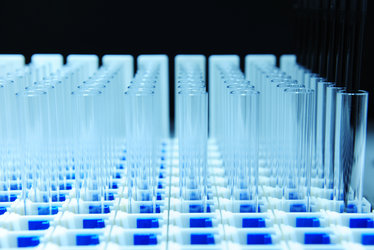Hepac is the leading producer of crude porcine heparin from high-quality European mucosa
- Crude porcine heparin to produce Heparin API and low-molecular-weight heparin
- Produced from high-quality traceable intestinal mucosa obtained via a controlled supply chain exclusively
- Exceeding industry standards with state-of-the-art process equipment and stringent quality controls
Our crude heparin is solely produced from porcine intestinal mucosa from pigs used for the food industry. Such pigs - which have been declared fit for human consumption by ante- and post-mortem approval by veterinarian authorities - are obtained from European pig slaughterhouses.
The origin of our crude porcine heparin is fully traceable to the farm level. The harvesting and handling process of pig intestines is one requiring skilled staff and specialized equipment.
That’s why, besides working in compliance with industry standards, we have stringent quality and product safety requirements that we apply throughout our supply chain. It makes us the trusted source of crude heparin for the pharma industry for the manufacturing of the highest quality heparin (UFH) and low-molecular-weight heparin (LMWH).
It also makes us the go-to expert for guidance on how to achieve the highest-quality collected porcine mucosa in harvesting processes that exceed industry standards.
Did you know? Heparin was discovered by Jay McLean and William Henry Howell in 1916, it gets its name from the Greek word for liver ‘hepar’ and was originally isolated from canine liver cells (read more).
Hepac
Eager to see a glimpse of how we collect the finest mucosa for our crude heparin? Watch the video!
Or download our leaflet and read about the advantages that our crude heparin can bring you.
Porcine heparin is one of the oldest pharma products still widespread for clinical use. Most commonly it is used as:
- an effective coagulant, that prevents the blood from clotting
- to treat and prevent deep vein thrombosis and pulmonary embolism
- to treat myocardial infarction and unstable angina
Another application of heparin is as inner surface anticoagulant on various experimental and medical devices, such as test tubes and renal dialysis machines.
Nowadays heparin can be synthesized using chemical processes, but still today almost all the heparin is extracted from the porcine intestinal mucosa. Collecting such mucosa for heparin takes place in pork-producing areas worldwide.

Hepac is a Darling Ingredients company the industry-leading producer offering many products across numerous markets. With deep obligation to produce high-quality and safe products more sustainable from carefully sourced raw materials. As Darling are we proud to be at the forefront of the developments in the pharmaceutical industry as a trusted partner to the health industry with our natural solutions.

